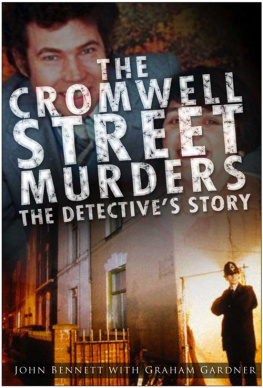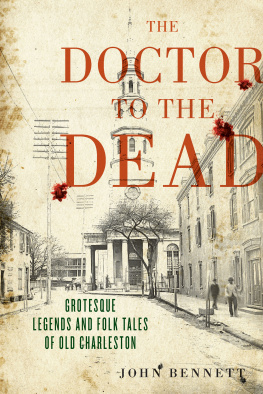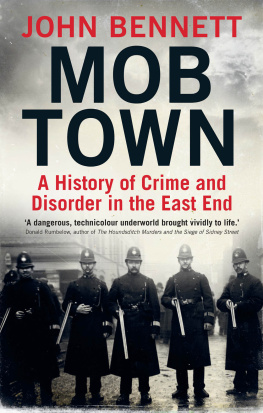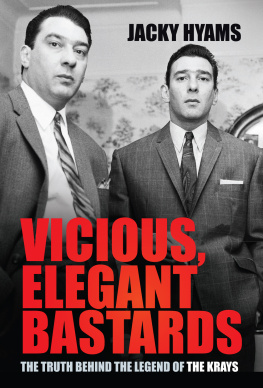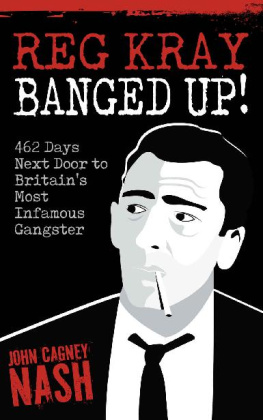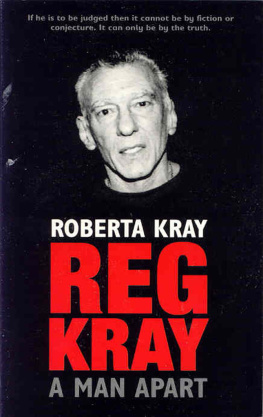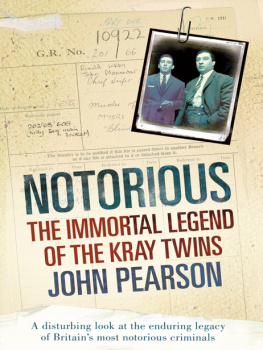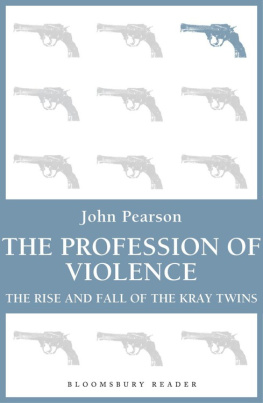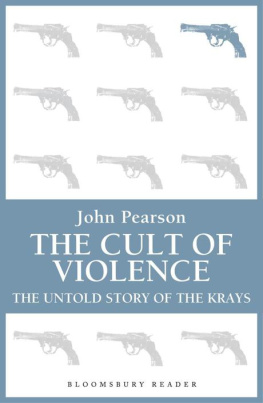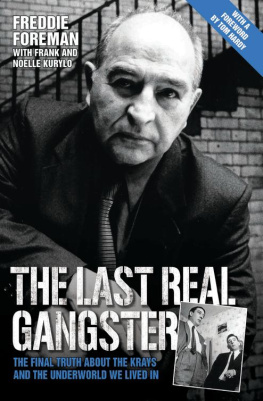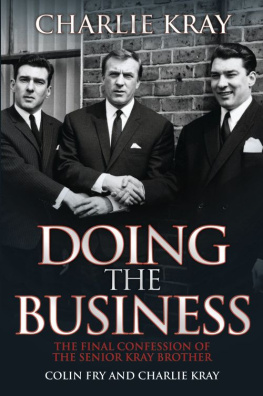John Bennett - Krayology
Here you can read online John Bennett - Krayology full text of the book (entire story) in english for free. Download pdf and epub, get meaning, cover and reviews about this ebook. year: 2019, publisher: Mango Books, genre: Non-fiction. Description of the work, (preface) as well as reviews are available. Best literature library LitArk.com created for fans of good reading and offers a wide selection of genres:
Romance novel
Science fiction
Adventure
Detective
Science
History
Home and family
Prose
Art
Politics
Computer
Non-fiction
Religion
Business
Children
Humor
Choose a favorite category and find really read worthwhile books. Enjoy immersion in the world of imagination, feel the emotions of the characters or learn something new for yourself, make an fascinating discovery.

- Book:Krayology
- Author:
- Publisher:Mango Books
- Genre:
- Year:2019
- Rating:5 / 5
- Favourites:Add to favourites
- Your mark:
- 100
- 1
- 2
- 3
- 4
- 5
Krayology: summary, description and annotation
We offer to read an annotation, description, summary or preface (depends on what the author of the book "Krayology" wrote himself). If you haven't found the necessary information about the book — write in the comments, we will try to find it.
Krayology — read online for free the complete book (whole text) full work
Below is the text of the book, divided by pages. System saving the place of the last page read, allows you to conveniently read the book "Krayology" online for free, without having to search again every time where you left off. Put a bookmark, and you can go to the page where you finished reading at any time.
Font size:
Interval:
Bookmark:
KRAYOLOGY
AN INDEPENDENT EXAMINATION
OF THE RISE AND DEMISE OF
THE BROTHERS KRAY: 1933-68
JOHN BENNETT
First Edition published 2015
Copyright John Bennett, 2015
The right of John Bennett to be identified as the author of this work has been asserted in accordance with the Copyright, Designs & Patents Act 1988.
All rights reserved. No part of this book may be reprinted or reproduced or utilised in any form or by any electronic, mechanical or other means, now known or hereafter invented, including photocopying and recording, or in any information storage or retrieval system, without the prior permission in writing of the publishers.
Unless otherwise stated, images are from the authors collection. Whilst every effort has been made to credit all images to the appropriate source/copyright holder, the author apologises for any oversight, which we would be happy to correct in future editions.
ISBN: 978-0-9931806-3-7 (hardback)
ISBN: 978-0-9931806-5-1 (ebook)
Published by Mango Books
www.mangobooks.co.uk
18 Soho Square
London W1D 3QL
KRAYOLOGY
INTRODUCTION
Whether we wish to face up to it or not, crime fascinates. The simple (or in some cases not so simple) act of breaking the law, with its often serious ramifications for the perpetrator and the victims of the offence, can frighten us, appal us or excite us, often all at the same time. For those who have no criminal record, criminal behaviour and those individuals who execute it seemingly come from a world far removed from our own, yet it is one that we live uncomfortably close to and have done since man could first break those early unwritten rules. From the cunning acts of petty thieving and pick-pocketing ably demonstrated by any number of Charles Dickenss guttersnipes, to the barbaric horrors of the modern serial killer, the sheer weight and diversity of media concerning crime shows no sign of losing its appeal.
Much of the interest from the public in true crime can be seen as a safe way of experiencing taboos. Many are truly fascinated by the mindset of criminals, especially murderers, and seek to understand why anybody would bring themselves to commit such outrages. For some, it is the thrill of the chase, enjoying the often complex processes employed by crime-fighters to finally catch the perpetrator. The popularity of TV shows like the CSI franchise or the Sherlock Holmes stories are testament to that. However, for most of us, whether it is reading about Al Capones gangland exploits in the USA, the daring escapades of the Great Train Robbers, or the sordid multiple homicides of somebody like John Christie of Rillington Place, this other world - the criminal world - is at a safe enough distance. Millions enjoy scary movies full of gore in the same way; it can be seen, gives that visceral thrill of watching something that wouldnt normally be enjoyed otherwise, and all from the safety and comfort of the cinema or the sofa.
But crime has consequences, and not just for the criminal and his immediate victims; in certain forms of crime, the influence and cost can be far-reaching. Gang crime is a good example of this. The sheer number of people involved in gangs, whether they be Chicago mobsters of the 1920s or some Hackney street gang trading in drugs today, ensures that one violent or drastic action can have ramifications that bounce from one set of individuals to another, sometimes resulting in desperate acts of revenge, bloody shows of one-upmanship and, unfortunately, in too many cases violent injury or multiple deaths. When rival gangs play out their war games on the streets, the whole neighbourhood feels it.
Gang culture has always been with us; our earliest ancestors formed themselves into tribes, probably for self-preservation as much as anything, and that societal norm is still ingrained in communities across the globe, often where hardship is present. It gives a sense of safety in numbers, peer support and of course, when the going gets tough, dominance over the enemy, in whatever form that takes. In East London alone, an area of about five square miles, there are presently over fifty recorded gangs, These East End tribes are continuing a long tradition in this most fractious part of London, a tradition that arguably reached its zenith in the 1950s and 1960s when, with a public profile uncharacteristic of organised criminals, the Kray twins and their Firm made their mark on the British consciousness.
The story of Reginald and Ronald Kray, remarkable as it is, appears to warrant continual retelling. Identical twins, born in a poor and dirty part of London to a peculiar some would say dysfunctional family, they were bullies who hated bullies; heavy drinkers who hated drunks; identical twins who gradually became different in both appearance and temperament; bisexuals (openly so in Ronnies case) in an age when homosexuality was illegal and the love that dare not speak its name; they adored their mother with cloying devotion, yet were prone to awful acts of unprovoked violence; criminals who, rather than keeping their heads down, courted publicity and fame; they were at home in the exclusive clubs of the West End as much as they were in the dingy pubs of the East End. From humble beginnings as local tearaways, they moved into clubs and illegal gambling, protection rackets and fraud. They enjoyed tremendous luck when dealing with the law and the press, interpreting that luck as a carte blanch e to do what they liked without fear of conviction, which ultimately led them to intercontinental high-end crime and, eventually, to murder. The story of the Kray twins is a contradiction-riddled one of survival, the desire for success and wealth, pride, and power games, all laced with shocking violence, paranoia, glamour and, strange as it may seem, some genuinely surreal comic moments. Add to that a whole cast of colourful, real-life characters from the realms of East End crime, sport, showbiz and the aristocracy and you have quite a saga. But is there anything left to be said?
Actually, there is quite a lot.
It was when reading the many books about the twins rise and fall that I quickly began to realise that often the authors of these books, many of whom had worked alongside the twins and in some cases went down with them, had their own particular story to tell. That often meant that an account of a particular key event would change, dependent on the teller. Another frustrating characteristic of many of the books is that often, incidents are thrown into the mix without any reference to their position in the Kray story: I remember one night when Reggie... or Around about that time... are seen often. It is only by reading the different accounts that one can gradually begin to work out what happened when. I believe this is important as it helps us chart the behaviour of the twins and their associates and the development of their criminal activities; there appears to be a definite progression and pattern. Also, accounts of the Krays exploits are littered with names and places, many of them key to the unfolding story, and I was always left wanting to know a little bit more about them; What was their background?, Where exactly was that pub? and similar questions regularly presented themselves. Thus, this book is a distillation of a wide variety of sources; written memoirs, filmed interviews, newspaper reports and archive documents from a number of institutions. I have attempted to produce a continuous and, hopefully, accurate narrative by bringing these together, using them appropriately, based on what I believe are their own merits.
The lynch-pin of this book are the archives in London relating to the Krays (notably held at the National Archives, London Metropolitan Archives and Tower Hamlets Library), which were an important resource for finding out a wealth of new information. The National Archives (the former Public Record Office) in Kew provided a rich seam of new material; in fact it is staggering. Much of their material relating to the Krays, mainly from the Metropolitan Police, is now open to the public and has provided incredible insight into all aspects of the case. Considering many of these files have been open for over a decade, it is surprising how little has been used before: admittedly, official documents had been examined and used by Martin Fido (1999), Craig Cabell (2002 and 2006) and James Morton (2008), but authors continue to produce books on the Krays and repeat inaccuracies which could have been eliminated through scrutiny of this important material.
Next pageFont size:
Interval:
Bookmark:
Similar books «Krayology»
Look at similar books to Krayology. We have selected literature similar in name and meaning in the hope of providing readers with more options to find new, interesting, not yet read works.
Discussion, reviews of the book Krayology and just readers' own opinions. Leave your comments, write what you think about the work, its meaning or the main characters. Specify what exactly you liked and what you didn't like, and why you think so.

